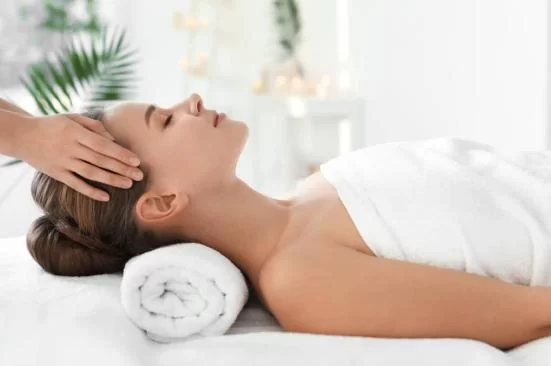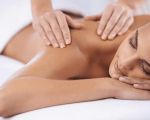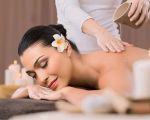
- Understanding Anxiety and the Need for Relaxation
- How Spa Treatments Alleviate Anxiety
- Real-Life Examples of Anxiety Reduction through Spa
- Choosing the Right Spa Experience for Anxiety Management
- Professional Advice on Maximizing Benefits of Spa Therapy
1. Understanding Anxiety and the Need for Relaxation
Anxiety is a common mental health challenge affecting millions worldwide. Characterized by persistent worry, tension, and nervousness, anxiety can severely impact daily life and overall wellbeing. While medications and therapy are primary treatments, complementary approaches like spa treatments are gaining recognition for their ability to promote relaxation and ease anxiety symptoms.
Relaxation plays a crucial role in managing anxiety because it helps regulate the body’s stress response. When stress hormones such as cortisol remain elevated, the nervous system stays on high alert, worsening anxiety. Therefore, effective relaxation techniques can interrupt this cycle, allowing the mind and body to recover balance.
The benefits of spa treatments for reducing anxiety extend beyond mere indulgence. They provide a holistic approach that addresses physical tension, mental stress, and emotional exhaustion—components often intertwined in anxiety disorders.
1.1 The Science Behind Relaxation and Anxiety
Research shows that spa treatments can lower heart rate and blood pressure, reduce cortisol levels, and increase endorphin production. These physiological changes create a sense of calm and wellbeing. The combination of soothing environments, therapeutic touch, and controlled breathing during spa sessions triggers the parasympathetic nervous system—the "rest and digest" mode—counteracting anxiety’s fight-or-flight state.
1.2 Why Natural Approaches Matter
Unlike medication, which may come with side effects, spa therapy offers a drug-free, natural way to manage anxiety. This is especially beneficial for individuals seeking gentle, sustainable relief without long-term dependency.
2. How Spa Treatments Alleviate Anxiety
Spa treatments incorporate multiple techniques that directly and indirectly reduce anxiety symptoms. Below we explore how these elements work synergistically to create an overall calming effect.
2.1 Massage Therapy: Releasing Physical and Emotional Tension
Massage therapy is a cornerstone of spa treatments known to ease muscle tension and stimulate circulation. When muscles relax, the body signals the brain to reduce stress hormone production. Additionally, the nurturing human touch triggers oxytocin release, which promotes feelings of trust and safety—counteracting anxiety’s emotional turmoil.
2.2 Hydrotherapy and Warm Baths
Hydrotherapy uses warm water to soothe muscles and calm the nervous system. The buoyancy and heat relieve pressure on joints and improve circulation, inducing deep relaxation. Warm baths with calming essential oils like lavender or chamomile enhance this effect, contributing to anxiety relief.
2.3 Aromatherapy: Scent as a Pathway to Calm
Aromatherapy uses plant-derived essential oils to influence brain chemistry. Scents such as bergamot, ylang-ylang, and frankincense have been scientifically shown to reduce anxiety and elevate mood. Integrating aromatherapy in spa treatments magnifies the calming experience and provides an accessible tool for anxiety management.
2.4 Mindfulness and Meditation Integration
Many modern spas incorporate guided meditation and breathing exercises to deepen relaxation. These practices train the mind to stay present, reducing the rumination that fuels anxiety. Combining mindfulness with physical spa therapies creates a powerful dual approach to anxiety reduction.
3. Real-Life Examples of Anxiety Reduction through Spa
Stories of individuals finding relief through spa treatments highlight the practical impact of these therapies. Take Sarah, a marketing executive who struggled with chronic anxiety and insomnia. After committing to weekly spa sessions focused on massage and aromatherapy, she reported significant improvements in mood, sleep quality, and stress resilience within three months.
Another example is David, a veteran coping with PTSD-related anxiety. Hydrotherapy combined with mindfulness sessions at a specialized spa helped him manage panic attacks and regain emotional control. These personal accounts underscore how spa therapy can complement conventional treatments, offering hope and tangible benefits.
3.1 Popular Cultural Recognition
The rising popularity of spa retreats among celebrities and influencers has also brought attention to the mental health benefits of spa treatments. Public figures openly discussing their experiences with anxiety relief through spa therapy help destigmatize mental health and encourage wider acceptance of holistic approaches.
4. Choosing the Right Spa Experience for Anxiety Management
Selecting the appropriate spa treatments tailored to anxiety is key to maximizing benefits. Not all spa therapies are created equal—some may focus on luxury and indulgence, while others prioritize therapeutic outcomes.
4.1 Evaluating Spa Services
When looking for anxiety relief, seek spas offering services with proven calming effects such as therapeutic massage, hydrotherapy, and aromatherapy. It’s important to check whether spa therapists are trained in stress and anxiety management techniques.
4.2 Personalized Spa Packages
Many spas, including Spa, provide personalized packages combining multiple therapies designed to address both physical and psychological aspects of anxiety. Customization ensures the treatment aligns with individual needs and preferences, enhancing effectiveness.
4.3 The Environment Matters
The spa atmosphere plays a crucial role in relaxation. Calm, serene settings with minimal noise, soft lighting, and natural elements contribute significantly to anxiety reduction.
5. Professional Advice on Maximizing Benefits of Spa Therapy
To gain the most from spa treatments, experts recommend consistency and integrating spa visits with other healthy habits. Regular sessions help build a resilient stress threshold and improve mental wellbeing over time.
5.1 Complementing Other Anxiety Treatments
Spa therapy should be viewed as a complementary approach alongside counseling, medication, or lifestyle changes. Consulting healthcare professionals before beginning spa therapy ensures safety and appropriateness.
5.2 Incorporating Mindful Practices at Home
Techniques learned during spa treatments—such as deep breathing and mindfulness—can be practiced daily at home, extending the calming benefits between visits.
5.3 Listening to Your Body
Finally, it’s essential to pay attention to personal responses to different therapies. What works well for one person may differ for another. Spa therapists at Spa can guide you in selecting treatments that suit your unique needs.
In summary, spa treatments offer a natural, multifaceted approach to reducing anxiety by combining physical relaxation, sensory therapies, and mental calm. By choosing the right spa experience and maintaining consistent practice, individuals can unlock profound benefits that enhance their quality of life.
For those interested in exploring these benefits further, Spa provides a curated selection of anxiety-focused spa products, services, and expert advice tailored to help you achieve lasting mental wellbeing.








